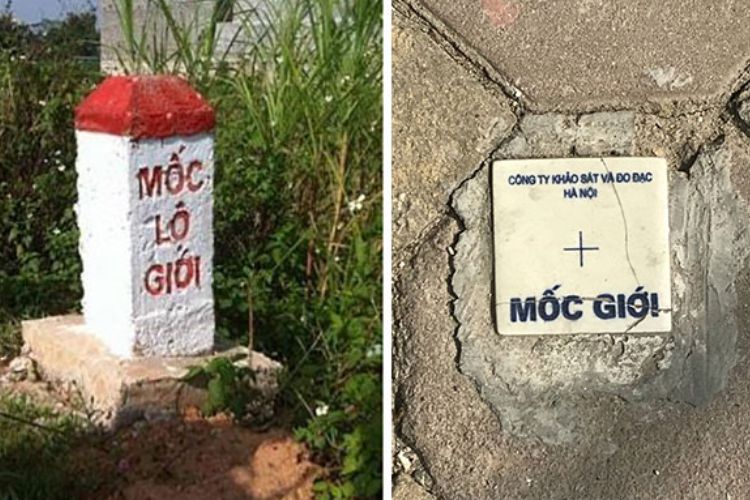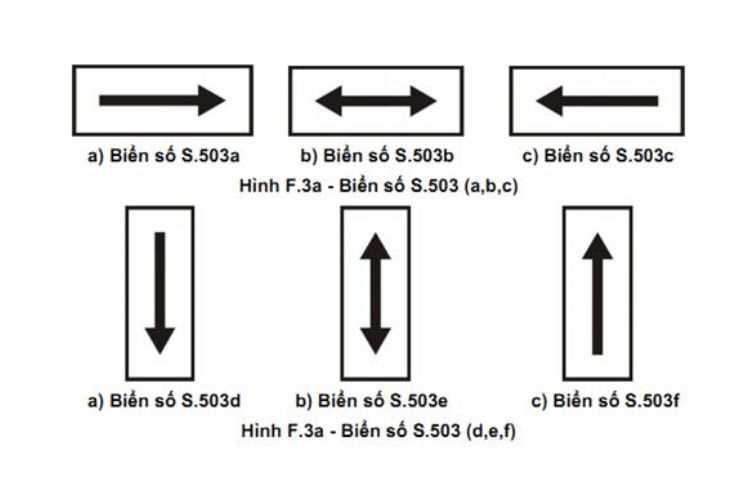1. Types of signal lights

a) Light type 1 Type 1 is a commonly used light type, with 3 green – yellow – red signal lights. There are also types 2, 3, 4 of signal lights that allow, in addition to the main lights, arrow lights to signal that the vehicle goes straight or turns left, right, or turns around.
b) Light type 2 includes three-color arrow-shaped lights to control vehicles in specific directions.
c) Light type 3: On the left is a red cross-arrow light, on the right is a blue arrow light. When the red signal is on, vehicles must stop, when the green light is on, vehicles are allowed to go in the direction of the arrow.
d) Light type 4: Signal light with 2 colors, blue and red. Type 1 is a vertical light: red signal above, green signal below; Type 2 is a horizontal light: red light on the left, green light on the right. Red signal means vehicles stop, green signal means vehicles can go.
e) Light type 5: Single red signal light. Type 1 is a round light, type 2 is a cross light. When the traffic light is on, place it behind the intersection in the direction of travel.
i) Light type 6 includes 4 white signals with diameters from 80 mm to 100 mm: signal light arrangement table.
k) Light type 7 is a signal light to control pedestrians, people standing are red, people walking are green. When the red signal is on, pedestrians are not allowed to walk, when the green signal is on, pedestrians are allowed to walk in the pedestrian path. Type 1: Red signal on the left, green signal on the right; Type 2: red signal above, green signal below
l) Light type 8 is a countdown light used to help vehicles know the effective time of the light signal. The digits on the countdown light must be displayed in two states: blue and red. When the signal is green, the digit is blue, when the signal is red, the digit is red. Type 1 is often used for lights in low positions, type 2 is used for lights in high positions or on the other side of the intersection.
m) Light type 9 is a light used to warn of danger: a flashing light has a circular shape or a rectangular light with danger warning content. The content of the text may change depending on the warning requirements. The flashing cycle of the light must be suitable to attract attention but still allow the vehicle driver to read the warning content.
n) In addition to the above-mentioned types of lights, arrow lights combined with the image of a type of vehicle can also be used to control and indicate a specific type of vehicle.
o) With the above mentioned lamp types, different signals (green, yellow, red) can be arranged on the same lamp but must ensure a single, clear color signal on the lamp surface at each time. during the lamp cycle.
p) Size of lights from 200mm to 300mm with main signal lights. With lights with numbers, letters and images of vehicles participating in traffic, they can be adjusted appropriately so that traffic participants can easily recognize them.
2. Some regulations when using the signal light system
– The minimum green light time for one traffic direction is at least 15 seconds;
– Pedestrian lights have a light cycle of at least 7 seconds. When pedestrian traffic is low and the road width is narrow to 2 lanes and is not a priority road, the light cycle can be reduced to a shorter period but not less than 4 seconds. Note, the speed of a pedestrian crossing the street is calculated as 1.2 m/s. If the place is arranged for people with disabilities to cross the street, the speed of the pedestrian crossing the street must be calculated as lower than 1.2 m/s and calculate the speed. Just rely on your inspection to set the appropriate light cycle.
To help pedestrians cross the street, especially those who are visually impaired, hearing impaired or disabled, people also use passive sensors or push buttons. Push button devices for pedestrians crossing the street include push buttons and flashing lights placed together on a pole in a convenient location on the sidewalk right at the starting position for pedestrians crossing the street. The push button device is also equipped with a sound emitter to indicate where the push button device is located. The easily recognizable sound has a cycle of 0.15 seconds and repeats every 1 second. The sound can be heard from a distance of 1 .8 m to 3.7 m and the volume is not lower than 5 dB but not higher than 89 dB and will be disabled when the flashing light cycle ends. When placing push button devices, field surveys must be conducted to arrange them appropriately.
– Use signal lights with a diameter of 300 mm on roads with V85 speeds of 60 km/h or more and in places where there are often no traffic controllers, where many elderly people participate in traffic;
– Signal lights must be visible from a distance and not less than the distance specified in table A.1:
3. Minimum distance to see the signal light
|
V85 speed (km/h) |
Minimum visible distance (m) |
|
30 |
50 |
|
40 |
65 |
|
50 |
85 |
|
60 |
110 |
|
70 |
140 |
|
80 |
165 |
|
90 |
195 |
– In places where lights with natural brightness are placed behind the lights, disrupting the driver’s recognition, research is needed to create a background behind the lights to help the driver’s recognition;
– Because the vehicle driver focuses on observing ahead to control the vehicle, when placing signal lights or traffic signs on the sidewalk or sidewalk, it is necessary to determine an effective observation area. The way to determine is as follows: open an angle of 40° from the driver’s eye position symmetrically through the eye axis forming the wall the driver’s clear field of vision. It is also important to pay attention to the ability to see the lights of vehicles behind large vehicles or traffic participants facing the sun.





